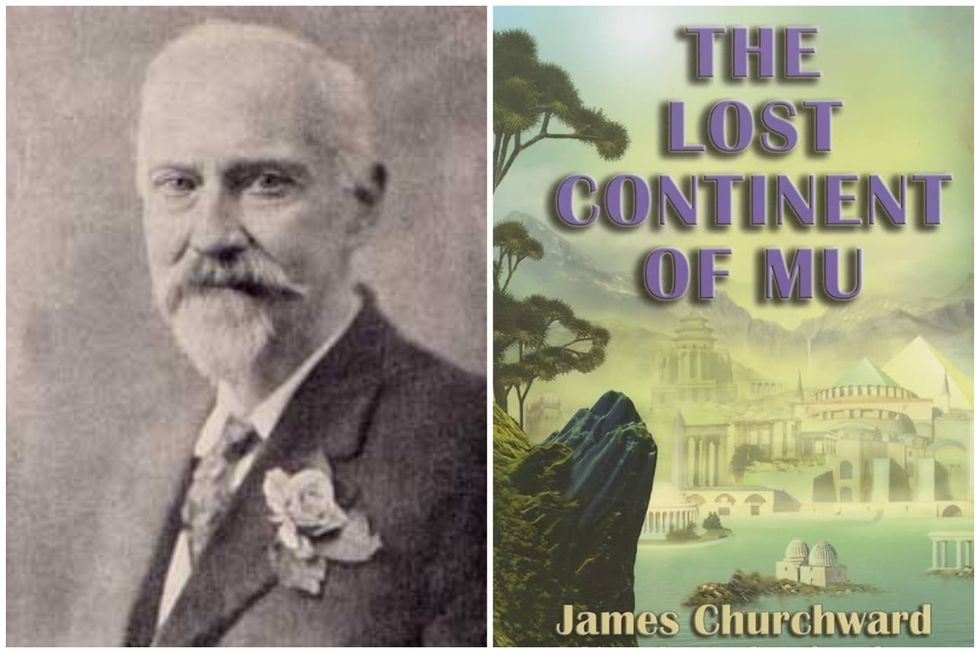Harriet Brewis
Jul 01, 2024

Some people believe that Nan Madol in Micronesia was built by Mu's "lost" Nascaal culture
(iStock)
Despite advances in science and radiocarbon dating, there’s only so far back into the past we can look.
That means that great chapters of ancient history will likely always remain a mystery, leaving gaping holes for myth and legend to fill.
Enter the long-lost continent of Lemuria, also known as Mu – a vast landmass that, according to believers, existed in the Pacific Ocean 50,000 to 12,000 years ago.
Proponents of the theory say that it stretched from Hawaii in the north to Easter Island in the southeast to Micronesia in the west.
They also posit that it was home to an advanced civilisation, called the Naacal, who built large cities across it, as well as colonies beyond its borders.
At its peak, they claim, Mu was home to some 64 million people.
However, sometime towards the end of the last Ice Age, the entire continent – and its sophisticated peoples – were consumed by a cataclysmic event.
This disaster plunged Mu and the Nascal down to the depths of the sea, sealing their doom and blocking their entry to the annals of history.
That is, again, according to those who believe that they existed. And we should stress that there’s no real proof that they ever did.

Indeed, the “Land of Mu” was first introduced to the world as a concept by British-American travel writer Augustus Le Plongeon back in the late 1800s.
He declared that several ancient civilizations, including Egypt and Mesoamerica, were created by refugees from Mu – which he located in the Atlantic Ocean, according to the blog A New Science of Everything.
Le Plongeon made the eyebrow-raising claims following his investigations of Mayan ruins in Mexico’s Yucatán region.
He announced that he had translated the first copies of the sacred Mayan book, Popol Vuh, and that in so doing, he had discovered that this ancient civilisation was older than that of Greece and Egypt.
Le Plongeon suggested that the civilisation of ancient Egypt was, in fact, founded by “Queen Moo”, a refugee from the lost continent.
Meanwhile, other refugees supposedly fled to North America, Central America, and South America, becoming the Maya.
Moreover, the writer and photographer suggested that the “Land of Mu of the Mayas” was the true identity of the mythical Island of Atlantis.

Le Plongeon’s ideas were then expanded upon by his friend, Scottish writer James Churchward in a series of books published in the late 1920s and 1930s, although, he said Mu was located in the Pacific Ocean.
Churchward claimed that “more than fifty years” earlier, while serving as a soldier in India, he befriended a high-ranking temple priest who showed him a set of ancient "sunburnt" clay tablets.
These were supposedly written in a long-lost "Naga-Maya language" which only two other people in India could read.
Churchward said he promised to restore and take care of the tablets if the priest helped him to decipher their meaning.
After learning the language from the priest, Churchward found out that the tablets originated from "the place where [man] first appeared—Mu".
Churchward allegedly claimed that the landmass measured more than 8,000 kilometres (5,000 miles) from east to west, and more than 4,820 kilometres (3,000 miles) from north to south, making it bigger than South America.
He also said that, according to the mysterious tablets, Mu "was completely obliterated in almost a single night" following a series of earthquakes and volcanic eruptions.
“The broken land fell into that great abyss of fire" and was covered by "fifty millions of square miles of water,” he wrote.

The Scot argued that the entire continent was destroyed in a single night because the main mineral on the island was granite, and that this rock had formed honeycomb-style structures.
These were then filled by highly explosive gases, meaning that they collapsed on themselves following the volcanic eruptions, causing the island to crumble and sink.
So far, no evidence of the lost continent has been found on the ocean floor, but some devotees to the Mu theory believe that a tiny remnant of Nascaal culture can still be visited today.
They point to the Nan Madol ruins in Micronesia – an incredible complex of man-made stone islands that float above a submerged coral reef.
One of the great mysteries surrounding Nan Madol is that no-one really knows who constructed it.

However, inevitably, a number of theories exist to explain the structures’ existence.
According to one such tale, it was constructed by so-called “master builders”, who turned up one day and used a magical force to raise the blocks into the air and put them into place, almost as though they could levitate them.
Therefore, some people suggest that, as the last remaining fragment of Mu to exist above water, Nan Modal offered a snapshot of what the continent’s ancient civilisation had been capable of.
Speaking to the History Channel’s ‘The Unexplained’, one researcher said: “When it comes to looking for this lost continent of Mu, places like Nan Madol really do suggest that there could be much more than we realise on the bottom of the ocean.”
This, if nothing else about the story, is certainly true.
Sign up for our free Indy100 weekly newsletter
Have your say in our news democracy. Click the upvote icon at the top of the page to help raise this article through the indy100 rankings
Top 100
The Conversation (0)













